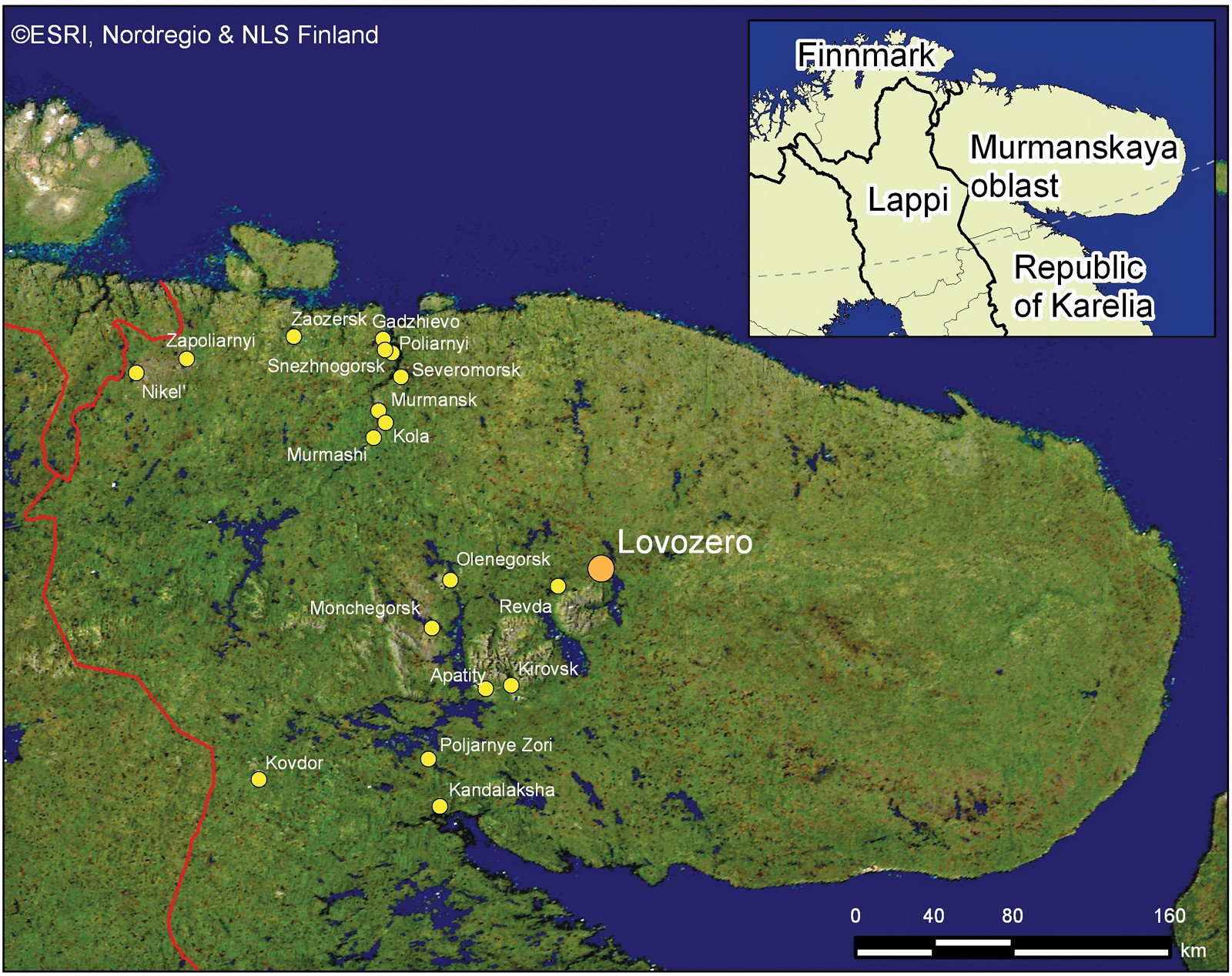In the small village of Lovozero, centrally situated on the Kola Peninsula, the turmoil wrought after the breakdown of Soviet power has taken its toll on the community. It used to be a rather anonymous small village of around 3,000 inhabitants, with a large con-tingent – around 800 persons - of Sami, but also major representations from other indigenous groups such as the Komi and the Nenets, many of them immigrated in 1883-84. Its economy was based on a combination of rare mineral production and a kolkhoz farm with reindeer herding as its primary activity. It was established during the 1930's and ended up with the total collectivization of reindeer herding in 1937.
In recent decades, however, the com-munity has drawn a lot of international attention, epitomized through three buildings next to each other at one end of the town. Within the walls of these buildings there are several entities which have definitely contributed to the shaping of the present, and perhaps also the future.
A newly erected Russian Orthodox Church was established in response to the post-soviet focus on religion. On the first floor of the nearby Hotel Virma, named after the local river, the Norwegian Sami Mission established a permanent office in 1997. The hotel also serves as a starting point for tourism, particularly for fisher-men looking for large salmon in the rich rivers in the hinterland. The fish used to be caught by the local communities, but are now up for sale to wealthy foreigners, organized by tourism businesses from the outside. Similarly a Swedish company took over the old reindeer abattoir and is now sending the reindeer meat to the Swedish market.
Next to the hotel a multi-cultural centre was established in 1994, aiming at giving all of the indigenous people in the community a basis for strengthening their cultural activities. The building, however, has recently been restored, based on a grant of some 1.2 million SEK from the Swedish Government dedicated to the development of a Sami cultural centre. Sami delegations and groups of individuals from across the Nordic countries are now arranging visits and exchange arrangements with the Sami group, disregarding the other indigenous groups. To be Sami today opens the way for foreign resources and special atten-tion, including that of the inter-national press such as the BBC. However it also opens the way for the influx of what in Russia is called "New Russians", persons who take advantage of any new opportunity to make a profit for themselves.
A special type of mission has also been introduced from Canada where the Arctic Institute of North America has tried to introduce to the community a Canadian Land Claim approach. Indigenous peoples in Canada have been quite successful in negotiating land rights based on traditional land use patterns, claiming rights to areas where land use activities have been documented. The approach was brought to Lovozero by a group of scholars and students from the institute, "helping the Sami to contribute their traditional knowledge of their land to help the Russian government manage resources and development in the region", by drawing maps of alleged traditional land use patterns including the migratory patterns of their reindeer herds, the presence of berry bushes, good fishing holes, cabin locations and sacred Sami sites, such as an island where Sami shamans are buried.
In this process, however, they often disregarded the fact that the community was multi-ethnic with very different approaches to land use and land rights being shown across the various ethnic groups, while fundamentally ignoring the fact that individual land rights have been absent since 1937.
